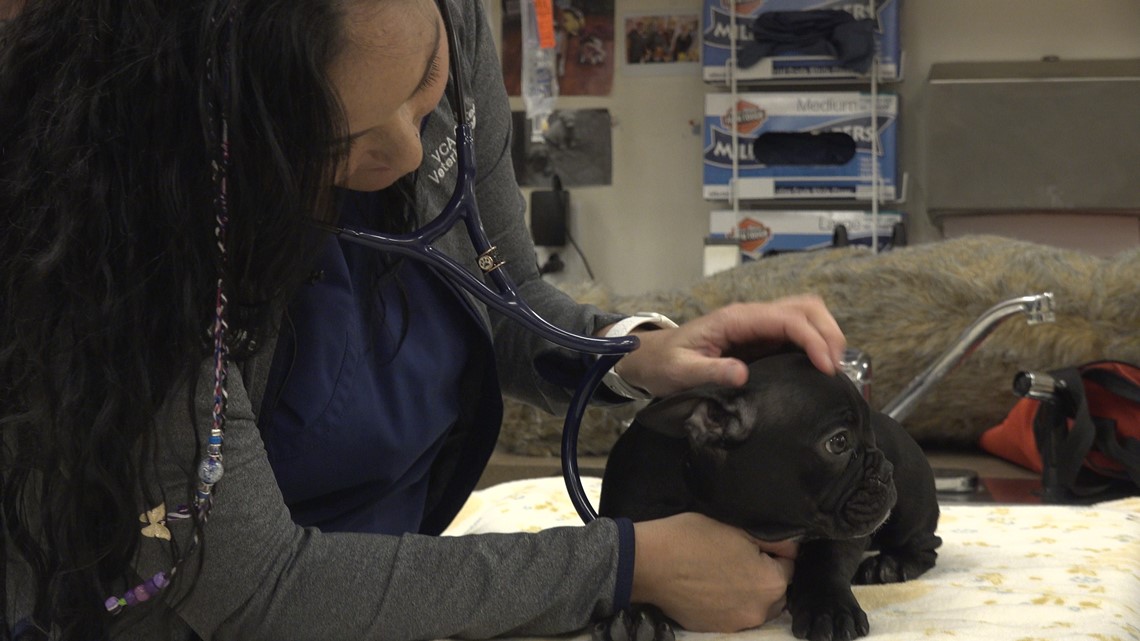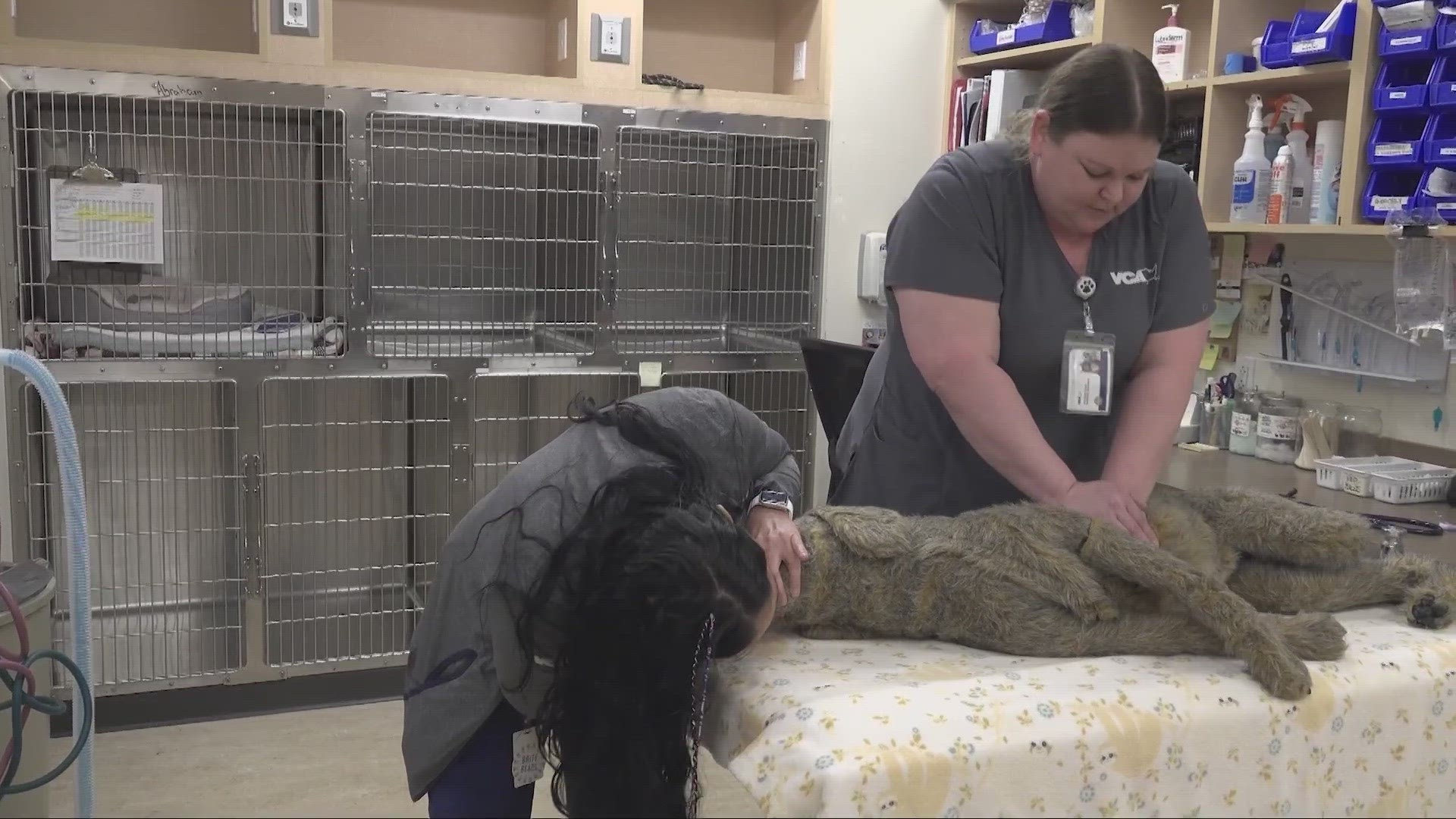WARRENSVILLE HEIGHTS, Ohio — How prepared are you for a pet emergency? We hope a life-threatening emergency doesn't happen, but knowing what to do and who to call can greatly improve the outcome.
The topic came up during our April 26th Ready Pet GO! segment on choosing a boarding facility or pet sitter. First aid and CPR certification is a must.
3News' Maureen Kyle, Hollie Strano and Dave Chudowsky all admitted they didn’t know pet CPR.
“It makes me feel like I need to get up to speed on things,” Strano said.
So we went to the experts at VCA Great Lakes Veterinary Specialists in Warrensville Heights where Dr. Katie Frantz is a Veterinary Emergency and Critical Care Specialist.
“I deal mostly with patients that come in, that have suffered severe trauma or have been sick for several days and are in really bad shape,” she said.
First: What constitutes an emergency? These are signs that your dog or cat could be in a life-threatening situation, and should receive emergency medical care as quickly as possible:
- Weak or rapid pulse
- Loss of consciousness
- Fainting
- Seizures
- Difficulty standing
- Pale gums
- Suspected paralysis
- Excessive bleeding
- Excessive vomiting or diarrhea (more than 2 or 3 times per hour)
- Change in body temp
- Eye injury
The following signs indicate heat stroke in dogs:
- Excessive panting
- Extreme lethargy/unwillingness to move around
- Drooling
- Reddened gums
- Vomiting
- Diarrhea
- Confusion
- Loss of consciousness
- Collapse


To help prepare us for a pet emergency, Dr. Frantz said make sure to have a first aid kit on hand. It should include gauze pads, adhesive tape, cotton balls or swabs, hydrogen peroxide and antibiotic ointment. A rectal thermometer is a good idea, too. You can make one on your own, or buy an already assembled kit like we did.
Have some ice packs handy as well. A couple of other items she recommends include corn syrup and corn starch or flour.
Why?
“Patients that are diabetic can have blood sugars that drop really low. A lot of owners already know this, but having corn syrup on hand, not only for those patients, but for very small puppies and kittens, and giving that to them can help get their blood sugar up.”
A broken toenail on your dog or cat doesn’t necessarily constitute an emergency, but Dr. Frantz admits the amount of blood can be kind of scary. She recommends corn starch or flour to help clot the blood.
Next step: Know the location and route of the nearest 24-hour emergency vet clinic. Have the number handy, too. This is where those refrigerator magnets are really helpful.
Another number you’ll need: Poison control for pets. The ASPCA Animal Poison Control center has a dedicated line. It is 888-426-4435. We wrote the number in permanent ink, right on our first aid kit.


Knowing Pet CPR is important, too. We encourage everyone to take a class. The Red Cross has an online class that takes only about 35 minutes. You can find it HERE.
Dr. Frantz did two demonstrations for us. One for a larger animal. The other for a smaller animal. They are slightly different.
Having two people on hand is best. One is performing CPR, while the other is transporting you and your pet to an emergency veterinarian.
CPR is performed by having your pets lie on one side or the other.
Chest compressions are given over the widest part of the chest.
Larger pet
One hand over the other.
About 100 compressions per minute.
Breaths are mouth to snout.
Close their mouth, cover their nose with your mouth. About 10 deep breaths per minute.
If you can’t do compressions and mouth-to-mouth, compressions are more important, according to Dr. Frantz.
“You can do chest compressions for one to two minutes and then stop, give a breath, and then immediately resume chest compressions again. Hopefully you have somebody that is driving a car to get you to the emergency vet,” she said.
Smaller pet
Chest compressions are different due to the animal’s size. Your pet is still lying on its side, but you will use one thumb and four fingers to squeeze right over the heart.
“You are doing compressions, but not as forcefully as you would on a larger dog, because you have a lot closer contact with the heart,” Dr. Frantz said.
The number of compressions and mouth to snout is the same as with a larger animal.

